
The Namhansanseong (Namhan Mountain Fortress) World Heritage Center has opened to fully manage and conserve Namhansanseong from this November. Prior to this inauguration, reports on poor and late responses to management have been frequently raised since the management system of Namhansanseong was divided into many parts, each managed by Gyeonggi Cultural Foundation, Gwangju City, and Hanam City. As a result, repair work, maintenance work, and handling civil affairs were not treated quickly and often overlapped. This problem does not only affect Namhansanseong, but many other cultural properties as well. The Sungkyun Times (SKT) provides the present condition of cultural heritage management, actual examples, and other excellent cases which the Cultural Heritage Administration of Korea should aim for.
Actual State of Cultural Heritage Management
A parliamentary audit of the Cultural Heritage Administration held on September 29 addressed the poor cultural heritage management as a key issue. Despite the effort of the Korean government so far, there are still several impediments to the improvement of the current management system.
The National Museum Experiencing Saturation
The average storage rate of both national and local museums in Korea is estimated to be about 89.9%. However, five museums in particular have more artifacts than they can possibly hold. The most serious instance is the Gongju National Museum which has a storage rate of 133.4%, followed by Buyeo National Museum with 132.2%. As a result, the museums requested to consign the management of a hundred thousand among 137 million cultural assets to other institutions. Cultural assets which have been consigned are more prone to damage or theft, since institutions other than the accredited museums are less likely to have a professional and organized management system. In fact, two cultural properties in 2011, and eight cultural properties in 2013 were damaged or have disappeared during consigned management.
Absence of Unified Management Guidelines
Cultural assets lie scattered across various sectors including the Ministry of Culture, Sports and Tourism, the Cultural Heritage Administration, universities, and even private holders. Each sector handles the properties in different ways because there are no comprehensive management guidelines to unify their managerial process. The National Assembly Budget Office said, “Main agents to take responsibility of cultural heritages are needed, and the government should check heritages on a regular basis with information provided by the agents.” Thus, managerial standards according to the type of each heritage are necessary. Since the Cultural Heritage Administration uses an electronic administration system and the National Museum supplies their own standard management system, it is hard to maintain cultural heritages in a unified manner.
Shortage of Human Resources
Almost 65% of the state designated cultural properties are managed by a local government, and it causes local public service workers to take on excessive duties. However, there are great standard deviations depending on the regions. For example, a public service worker in the capital area only needs to take care of five cultural heritages while a worker in North Chungcheong Province needs to take care of 15 cultural heritages. This is because while most cultural heritages are located in local areas, which were cultural centers in the past, people prefer to work in capital areas rather than local areas. In addition, professional workers are insufficient due to a lack of public finance. Only three out of ten safety officers for wooden cultural heritages have the firefighting coordinator certification.
Poor Cultural Heritage Management in Korea
Cultural heritages are generally categorized into four types. Firstly, “the state designated cultural property” includes national treasures, natural monuments, and folklore cultural heritages. In addition to the state, provinces also designate these cultural heritages as “province designated heritages.” Moreover, there is a “cultural property material” which is considered important in preserving folk culture, although it is not designated by the state or the province. Finally, “registered cultural properties” are the ones that need special management because they have lasted over 50 years after their construction.
UNESCO World Heritage
The Korean government promised to establish a museum of Namhansanseong when it was designated as a UNESCO World Heritage Site in 2014, but they did not deliver on this promise for over almost two years. According to the submitted materials by the Cultural Heritage Administration, the construction of the museum was planned to span from 2014 to 2018. This failure to keep the promise caused 3,000 excavated relics to be scattered over to seven different institutions, and only a small portion of them were stored in the National Museum. Moreover, the government committed to increasing workers of Namhansanseong from 15 to 21, but the number eventually fell to the current number, 11. This additional failure in duties aggravates the problem of poor management of cultural heritages in Korea, and may pose as a problem for the regular report to UNESCO, which is submitted every six years.

Cultural Property Material
Suwonhyanggyo, a Confucian school and temple to teach students in the local area, is now designated as the number one cultural property material of the Gyeonggi Province. It is introduced right after Suwon Hwaseong in Suwon travel guide books because it has immense historical value as the birthplace of Confucianism in the southern part of Gyeonggi Province. Contrary to the past, when it made a display of its authority by building a red gate called Hongsalmun with spiked tops at the entrance, it frequently experience parking difficulty in modern times. A stone tablet called Hamabi was even damaged by a car crash and it barely maintains its position with the help of temporary silicon tinkering. Although it is the second introduced location in travel guide books, there is no explanation for the monuments, and there is no one in the tourist office who makes a guidance of sightseeing. One of the public servants in Suwon said, “Suwonhyanggyo needs a great amount of additional repair work. However, the related budget will be reduced by the financial reform of the local government.”
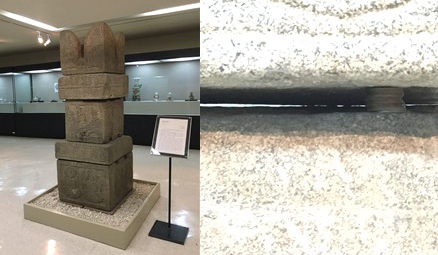
Exemplary Cultural Heritage Management
Unlike the above mentioned poor cultural heritage management cases, there have been many efforts to preserve our precious properties which could be a helpful reference for the Korean government to follow.
Korean Studies Advancement Center
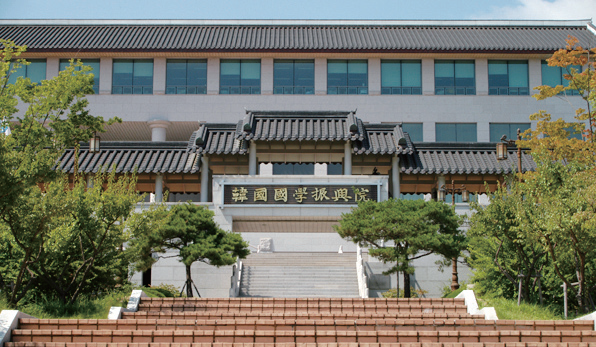
Scholars and individuals who try to prevent old documents from disappearing or being damaged established the “Korean Studies Advancement Center.” The center provided museum storage equipped with high quality thermal and humidity controls. The museum storage of the center is located in Andong, and it has received donations of 200 thousand old documents. It also received rare documents such as the draft collection of Toegye, Yi Hwang, and National Treasure Number 484, Uncheon’s Journal. These kinds of contributions such as establishing new institutions for cultural heritages can be a desirable way to manage scattered cultural heritages because both national and local museums suffer from saturation of their storage in Korea.
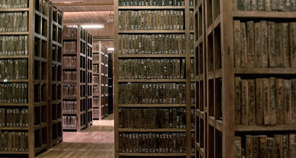
English Heritage
“English Heritage” was established by the “National Heritage Act 1983” and its formal title is “Historic Buildings and Monuments Commission for England.” It has a characteristic of an operational entity to achieve purposes of the British government, albeit independent from the government. The reason why it operates as a non-governmental organization is that it can practice independent authority over human resources and financial budget. This independence enables English Herigate to employ professional human resources and support finances for excavation or preservation of cultural properties. Moreover, the main difference from pre-existing organizations is that it is able to respond quickly to the requests of a local government or a private organization to handle cultural properties. The biggest problem of poor cultural heritage management in Korea is that most institutions related to cultural properties are dependent on the government, which makes it difficult for them to operate efficiently. Therefore, English Heritage can be a good example to improve this limitation.
Code du Patrimoine
The French government integrated many existing laws to the one called “Code du Patrimoine” to manage several types of cultural heritages efficiently. It helps to decide the range and types of cultural properties and regulate related matters concerning protection and preservation. By legitimating this law, France could eliminate overlaps between various laws concerning cultural properties, and it could simplify the existing laws. France’s “Code du Patrimoine” can be a good solution for Korea, where the lack of one unified regulation about cultural heritage management causes confusion.
Cultural Management around Us
According to the Cultural Properties Protection Law, there are some standards for the designation of cultural properties: having a great deal of historical or artistic value, representing a specific time period, or rarely existing due to its outstanding techniques or designs. Thus, it is important to conserve and maintain these invaluable properties. Therefore, in addition to the efforts of enacting laws or expanding facilities, public attention is required as well.
Sungkyunkwan University Museum
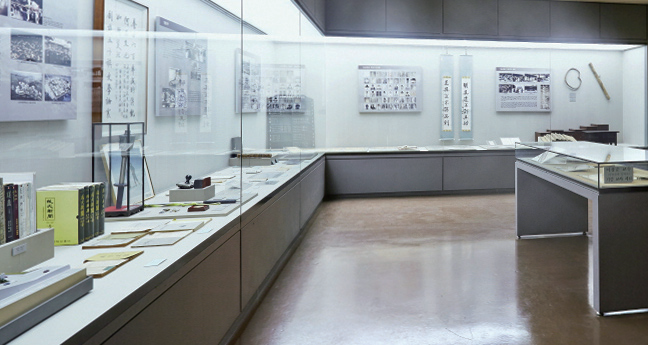
Sungkyunkwan University Museum was originally located on the fifth floor of the library, but relocated to the first basement floor of the 600th Anniversary Hall in 2000. It was established in 1964 to display the remains of Confucianism and contribute to academic research. Many relics, such as stationary and furniture at the museum, reveal Confucian scholars’ living conditions during the Joseon Dynasty. Moreover, there are various relics including earthenware from the Bronze Age and traditional remains of the modern periods. Old books called Keunmuk, which are collections of the handwritings of major people from the Joseon Dynasty to the Korean Empire, are especially considered as invaluable assets. In addition to these conservation activities, the museum implements investigation and publishing businesses.
Hamchunwonji
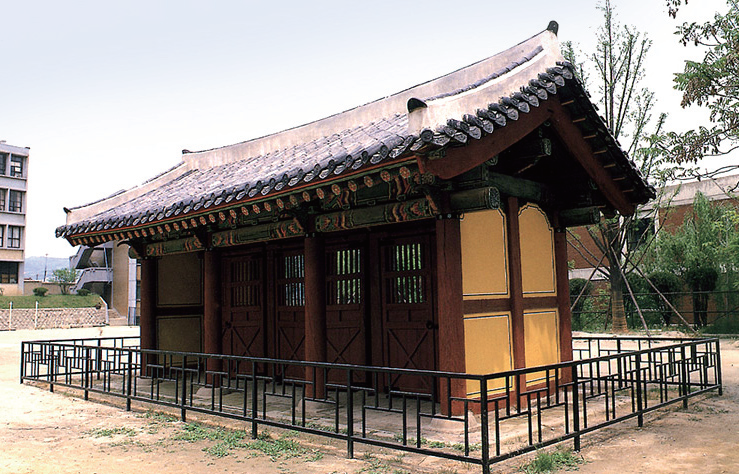
Hamchunwonji is where the Changgyeong Palace garden called Hamchunwon existed. It is now located at the College of Medicine, in Seoul National University, Yeongeon-dong, Jongno District, Seoul, and only Hamchunmun is left as a related remain. Kings of the Joseon Dynasty used to visit this place since it was a backyard passed down from the era of King Seongjong (1457~1494). However, King Yeongjo of Joseon (1694~1776) built a shrine for his son, Crown Prince Sado, and King Jeongjo (1752~1800) repaired the place for his father, Crown Prince Sado. It was destroyed as Keijo Imperial University was established during the Japanese colonial era, but it has been protected by the government after being designated as a historical site in 1973.
Cultural heritages are products of history containing people’s lives and memories. Therefore, people can conserve their ancestors’ lives and wisdom by carefully managing cultural heritages. While most people think that the state is responsible for cultural heritage management, many individuals or private organizations are starting to participate in preserving cultural properties. They engage in preservation activities including education, volunteer work, and monitoring. How about starting to take interest in our treasures?
